Your dog’s fur keeps tangling due to a mix of coat type, irregular grooming, and environmental exposure like moisture and dirt. To fix it, use proper brushes, detangling sprays, and establish a consistent grooming routine—especially if your dog has a long or double coat.
Understanding Dog Fur: Not All Coats Are the Same
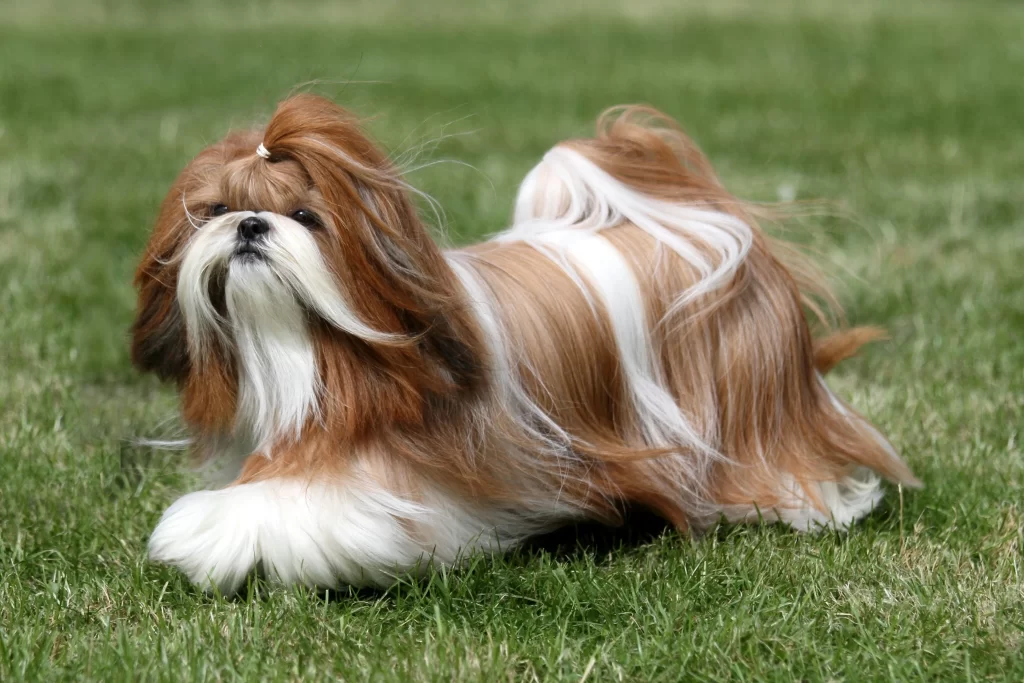
Not all dogs have the same kind of coat—and that’s where many owners go wrong. If your dog is constantly battling tangles, the first step is understanding their unique coat type.
- Single Coat vs. Double Coat:
Single-coated dogs (like Greyhounds) have one layer of fur, while double-coated breeds (like Golden Retrievers and Huskies) have a dense undercoat that sheds seasonally. That undercoat traps loose hair and moisture—perfect conditions for tangles and mats. - Breeds Prone to Tangles:
Dogs like Poodles, Shih Tzus, Maltese, and Cocker Spaniels have long, curly, or fine-textured fur. Their coats are beautiful but require regular care. - Genetics and Fur Texture:
Some dogs simply have fur that mats easier. Soft, silky, or curly hair tangles faster than coarse or wiry fur.
Natural Oils & Skin Health:
A healthy coat relies on skin oils. If your dog has dry skin or lacks essential fatty acids in their diet, their coat becomes dry and tangle-prone.
Common Causes of Tangled Dog Fur
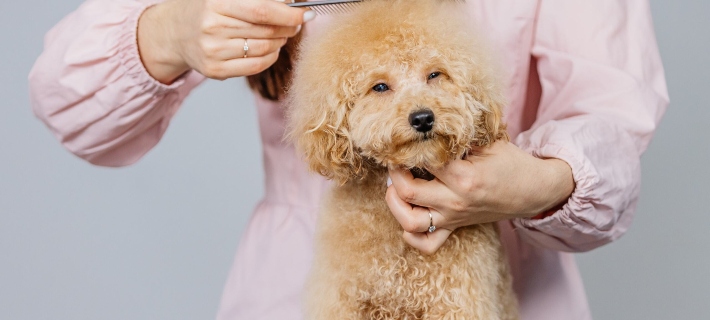
Tangles don’t happen for no reason. Here’s what’s likely behind your dog’s knotted mess:
- Lack of Regular Brushing:
Dead hair and dirt cling to healthy strands without daily or weekly brushing, forming knots that tighten over time. - Seasonal Shedding:
Dogs with undercoats shed in clumps. If not removed, these clumps become compacted and form painful mats. - Getting Wet (Without Drying):
Letting your dog air-dry after a bath or a swim causes their hair to clump as it dries. Always brush and dry after water exposure. - Outdoor Play:
Leaves, burrs, and dirt become tangled in fur. Active dogs need more frequent grooming. - Skin Conditions:
Allergies, hot spots, and irritations can cause dogs to scratch excessively, which in turn creates knots. - Wrong Grooming Tools:
Using a standard hairbrush on a double-coated dog won’t work. You need the right tools for your dog’s coat type. - Friction From Collars/Harnesses:
Pressure points like behind the ears, under armpits, and around collars are high-risk areas for matting. - Neglected Grooming in Older or Rescued Dogs:
Senior dogs or those from shelters often go weeks or months without a proper brushing, resulting in severe mats.
Signs Your Dog’s Coat Is Matting
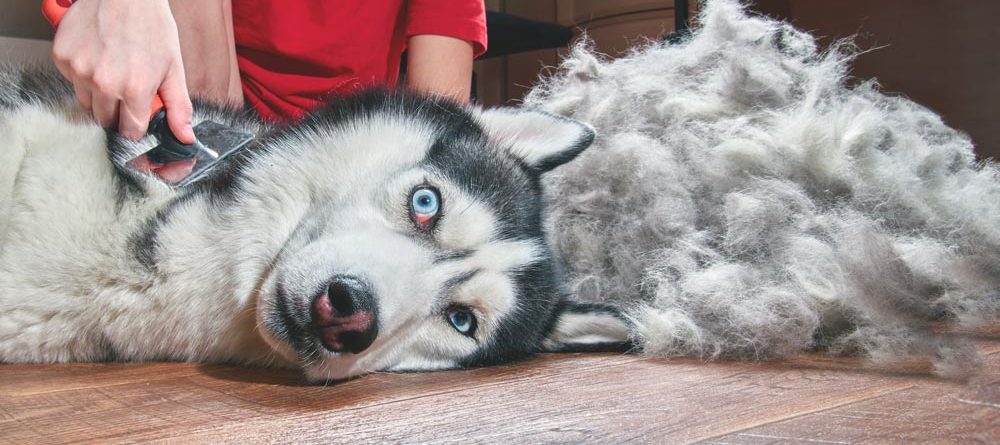
Before a small tangle becomes a big problem, know what to look for:
- Lumps and Bumps:
Pet your dog and feel for clumps under the surface—these are early-stage mats. - Resistance to Brushing:
If your brush stops mid-stroke or pulls too hard, there’s likely a mat underneath. - Red, Irritated Skin:
Mats tug on skin, reducing airflow and causing inflammation. - Behavior Changes:
Excessive scratching, chewing, or restlessness could be your dog’s way of saying, “I’m uncomfortable.”
How to Detangle Dog Hair Safely at Home
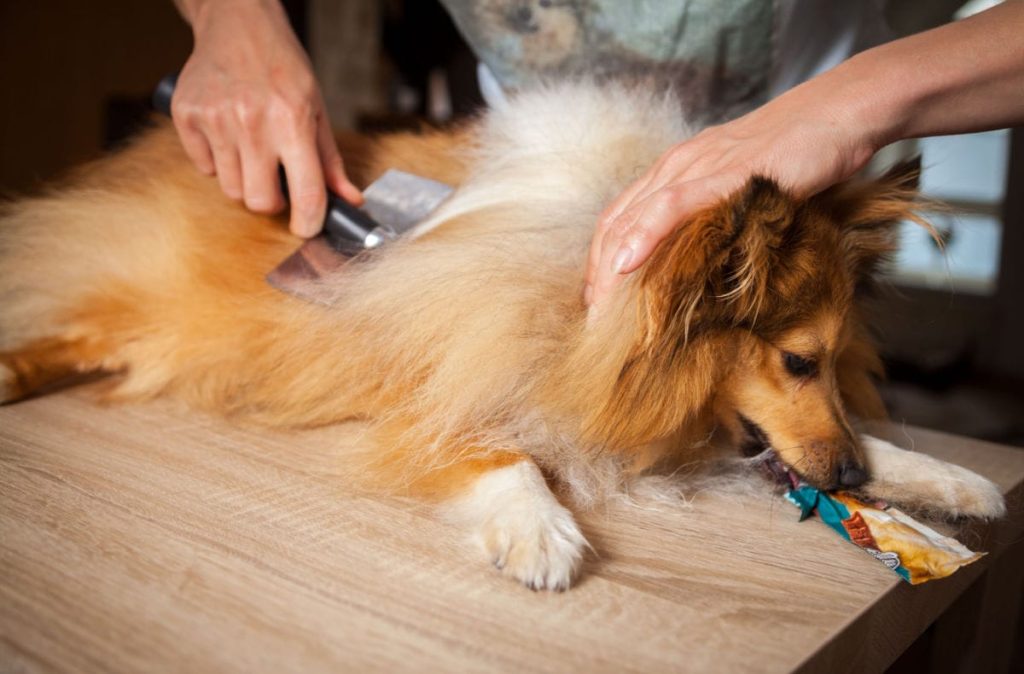
You don’t always need to run to a groomer—many tangles can be fixed with care and patience at home.
- Start With the Right Tools:
- Slicker brush: Great for general detangling.
- Dematting comb: Designed to break apart tight knots.
- Detangling spray: Softens fur to reduce friction and breakage.
- Slicker brush: Great for general detangling.
- Step-by-Step Process:
- Mist detangling spray over the matted area.
- Hold the base of the fur close to the skin to avoid pulling.
- Gently work from the tip of the fur inward—never pull at the root.
- Use your fingers for stubborn knots before resorting to a comb.
- Break up larger mats with a dematting rake.
- Mist detangling spray over the matted area.
- When to Trim:
If a mat is too close to the skin or impossible to brush out, carefully trim it. Use blunt-end grooming scissors and avoid cutting too close.
Soothe the Skin:
After detangling, apply a leave-in conditioner or aloe-based spray to reduce inflammation and itchiness.
When to See a Professional Groomer
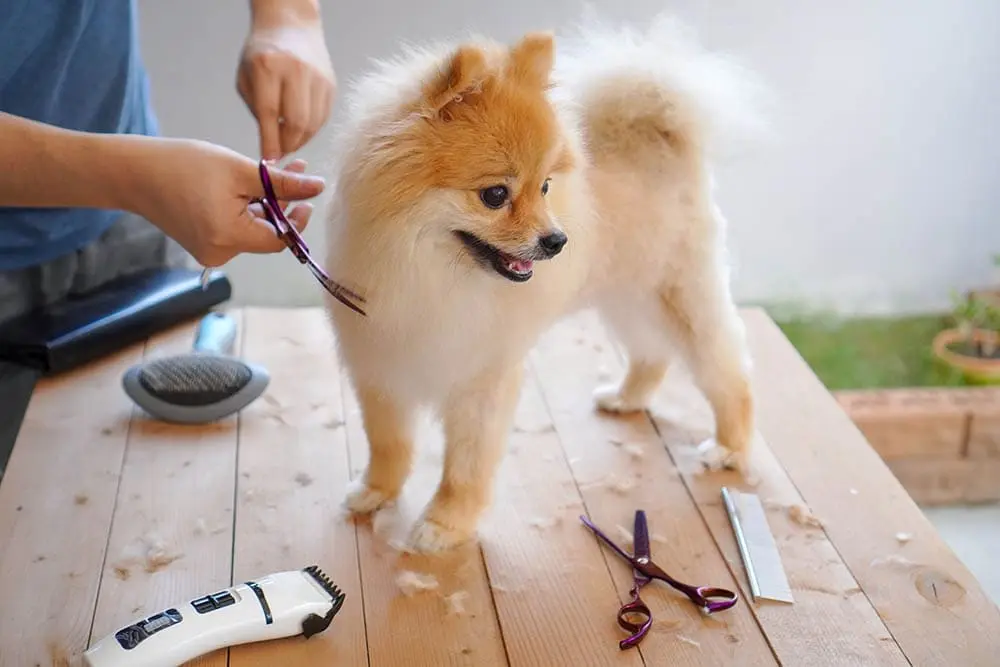
Some mats go beyond DIY. Knowing when to bring in an expert saves both time and stress for your dog.
- Severe Matting and Pain:
If your dog flinches when touched, mats may be causing pain or infections. - Lack of Proper Tools at Home:
Groomers have high-quality equipment, detangling solutions, and experience that pet owners don’t. - Need for Sedation:
In extreme cases where detangling would be traumatic, sedation may be required—only a vet or groomer can do this safely. - Health Risks Outweigh Cost:
Ignoring matted fur can lead to skin infections, ulcers, and emotional distress.
Preventing Tangled Fur in the Future
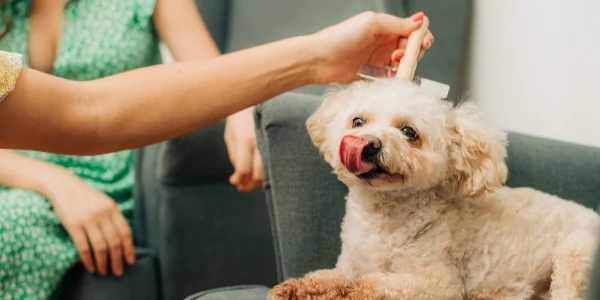
Prevention is easier than treatment. Make grooming a regular part of your routine.
- Tailor Your Schedule by Coat Type:
- Long-haired dogs: Daily brushing
- Medium coats: 3–4 times a week
- Short coats: Weekly is often enough
- Long-haired dogs: Daily brushing
- Choose the Right Brush:
Use slicker brushes for thick coats, bristle brushes for smooth coats, and rakes for undercoats. - Use Leave-In Conditioners:
Prevent tangles by keeping fur soft and moisturised after baths. - Establish a Bathing Routine:
Over-bathing strips oils, but under-bathing leads to dirt buildup. Bathe every 4–6 weeks depending on activity level. - Post-Swim or Rainy Days:
Always dry and brush your dog thoroughly after getting wet. - Diet Plays a Role:
A high-quality diet with omega-3 fatty acids promotes skin and coat health.
Breed-Specific Grooming Routines
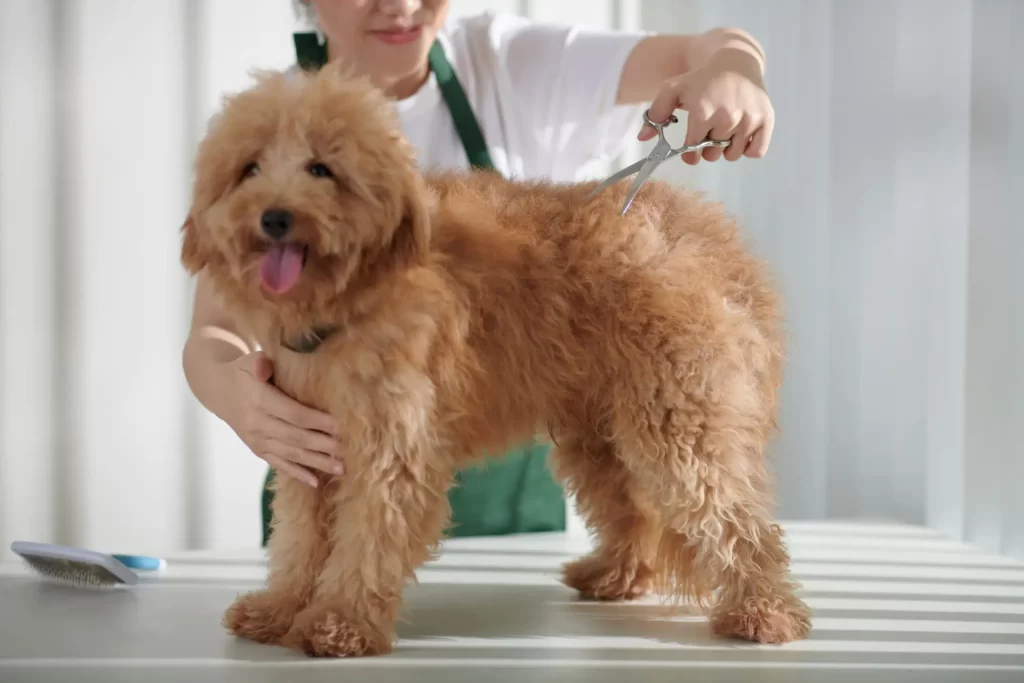
Each breed comes with its own grooming checklist. Here’s a sample:
- Shih Tzu & Maltese:
Daily brushing, regular trims, and tear stain cleaning - Golden Retriever & Collies:
Weekly deshedding, focus on undercoat, and seasonal raking - Poodles & Doodles:
Monthly professional grooming, weekly brushing - Cocker Spaniels:
Regular trimming, daily ear checks, and mat prevention near legs
Tangles and Your Dog’s Health: More Than Just Looks
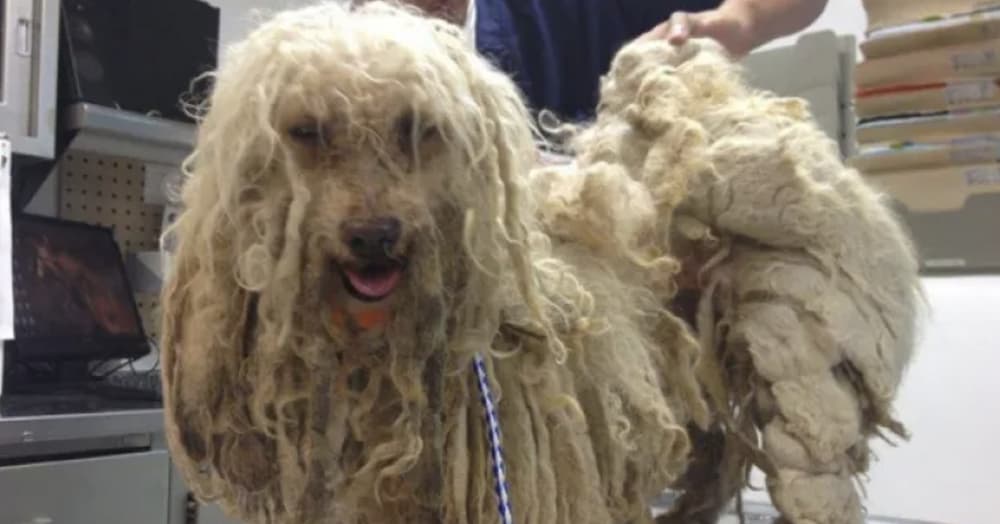
Tangled fur is not just an aesthetic issue—it’s a health concern.
- Skin Infections:
Trapped moisture under mats creates an ideal environment for bacteria. - Hot Spots:
Painful, raw areas from chewing or rubbing due to mats. - Parasite Havens:
Fleas and ticks thrive in tangled hair where they go unnoticed. - Restricted Movement:
Severe mats under armpits or joints limit your dog’s ability to move comfortably. - Behavioral Impact:
Constant discomfort can lead to anxiety or aggression.
Weather, Activity, and Lifestyle Factors
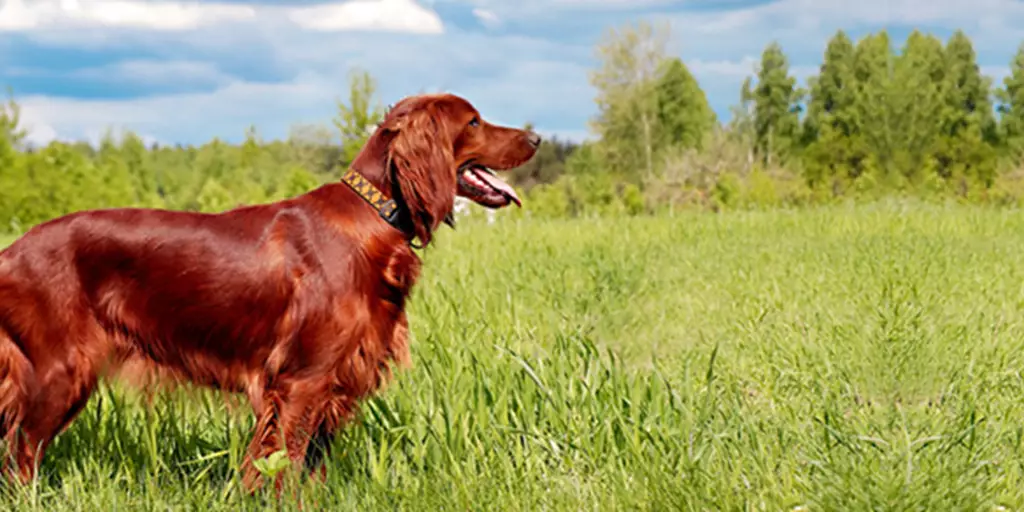
Climate and activity level change how you care for your dog’s coat.
- Humidity Increases Matting:
Dogs in tropical or damp climates are more prone to mats. - Outdoor Dogs vs. Indoor Dogs:
Dogs that roam fields or swim regularly need more frequent grooming. - Adapt to the Seasons:
Increase grooming in spring and fall when shedding spikes.
Must-Have Tools and Products to Prevent Tangles
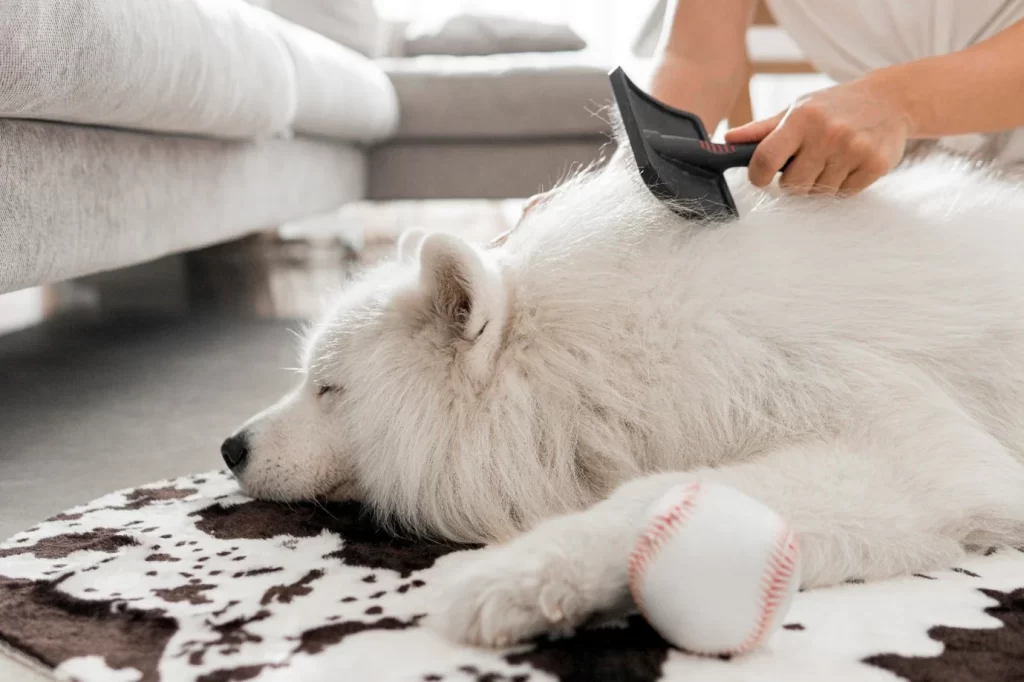
Equip yourself with the right gear to stay ahead of tangles:
- Brushes:
Slicker brushes, bristle brushes, dematting rakes, grooming gloves - Sprays:
Dog-safe detangling sprays, leave-in conditioners - Trimming Tools:
Blunt-tip scissors, clippers for major trims - Bonus:
Treats! Keep grooming positive by rewarding calm behavior.
Sample Weekly Grooming Routine (Checklist Format)
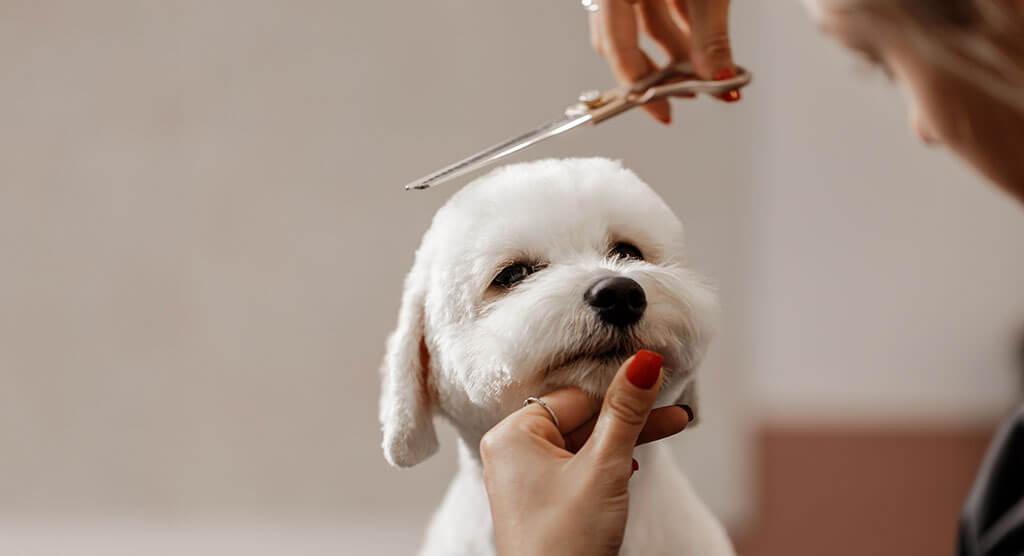
Monday:
- Brush out coat thoroughly
- Quick inspection for knots or debris
Wednesday:
- Spot brushing (focus on collar area, behind ears)
- Detangling spray if needed
Friday:
- Full brush-out
- Clean ears, check paws
Sunday:
- Bath (if needed)
- Blow dry and full detangle
- Reward and playtime
FAQs About Tangled Dog Fur
Should I cut out the mats myself?
Only if you’re confident and can see the skin. Otherwise, visit a groomer.
How often should I brush my dog?
It depends on their coat. Long-haired breeds may need daily brushing.
What if my dog hates brushing?
Use treats, start slow, and make it a calm experience. Consider a professional trainer or behaviorist for long-term improvement.
Are tangles painful for dogs?
Yes. Mats can pull on the skin and cause infections or sores.
Final Thoughts on Managing Dog Fur Maintenance
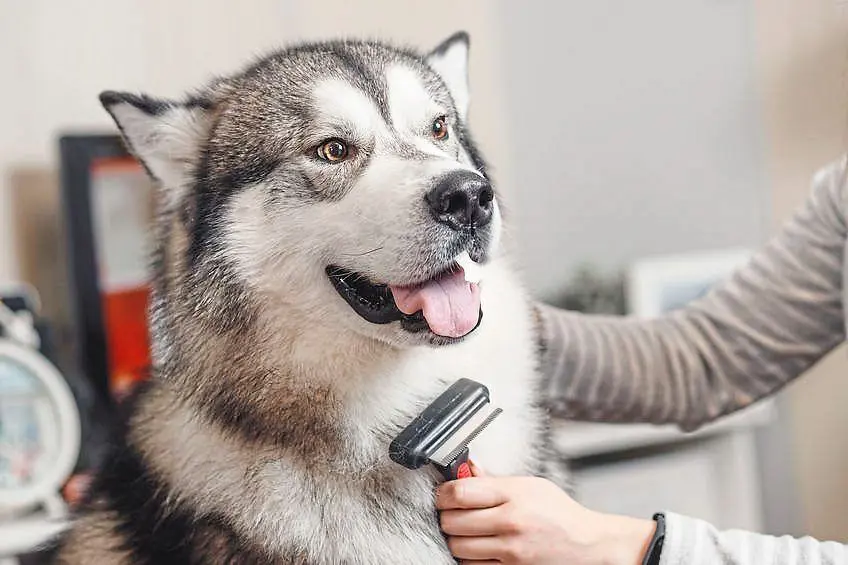
Keeping your dog’s coat free from tangles is about more than looks—it’s about comfort, health, and bonding. With the right tools, a consistent routine, and breed-specific care, you can prevent mats before they start.
At Careers Collectiv, we believe education empowers pet owners. Whether you’re just starting your grooming journey or considering a professional career in animal care, it starts with understanding—and action. Explore our animal care training program to build a solid foundation in responsible pet care and welfare.
Keep brushing. Keep learning. And keep your furry friend feeling their best.